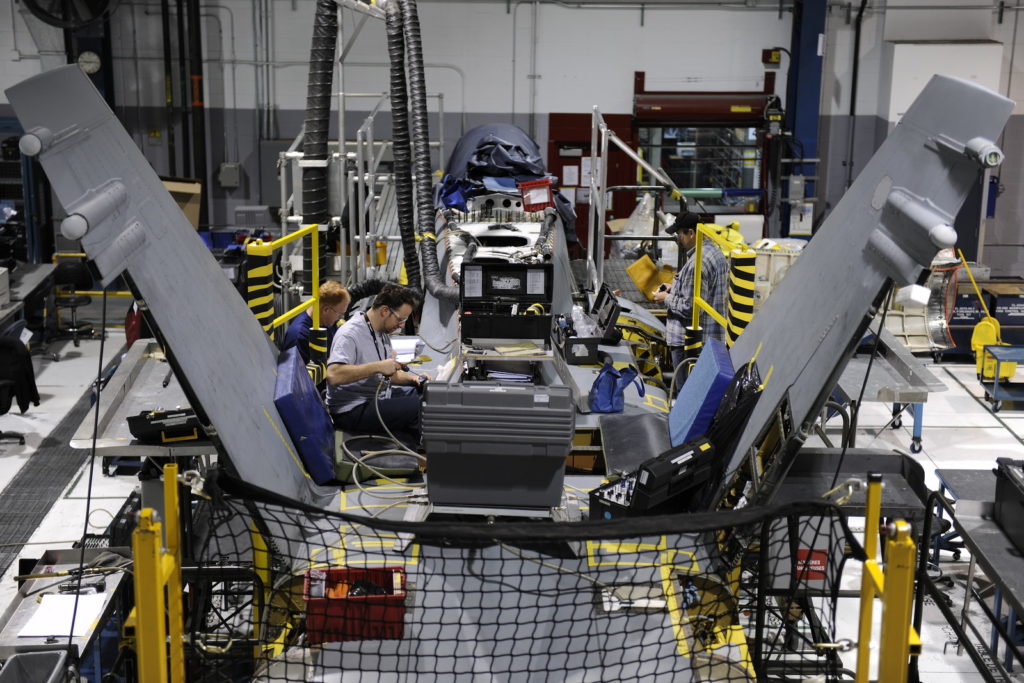Estimated reading time 6 minutes, 43 seconds.
Montreal is fast becoming a hub for the Internet of Things. From artificial intelligence, to autonomous systems, quantum computing, cyber security, and a vibrant gaming industry, companies in the city and surrounding area have staked a claim in the technology of tomorrow.

To date, however, many of those companies have been reluctant participants in the aerospace and defence sector. Their technology may be vital to future aircraft and defence platforms, but engaging in large, cumbersome projects can be daunting and a massive drain on limited resources. And it can be years before there is any payoff.
Aéro Montréal is hoping to change that. The aerospace strategic think tank, together with Sous-Traitance Industrielle Québec (STIQ), a manufacturers’ association, and Québec International, a regional economic development agency, launched the Quebec Security Defence Portal, an online resource intended to aggregate aerospace, defence and related sector capabilities in one location, and connect them with the acquisition plans of the Canadian Armed Forces and, eventually, the United States and other allies.
“We’re pooling our strengths . . . ,” said Charbel Khoury, project manager for Aéro Montréal. “Companies can focus on opportunities that are relevant to them as opposed to struggling to find them in the first place.”
The aim, he explained, is to provide a one-stop shop showcasing in detail the capabilities of Quebec-based companies and research organizations, information on the projects outlined in the federal government’s Defence Acquisition Guide (DAG), and connect those with the requirements of prime contractors and original equipment manufacturers (OEMs).
The portal, which was unveiled Oct. 23 during a defence and security market symposium hosted by Canada Economic Development for the Quebec Regions (CED), will include information on projects related to aerospace, naval, land, cybersecurity and C4ISR, the acronym for the connected nature of military platforms and the movement, management, and exploitation of vast amounts of sensors data known as command, control, communications, computers, intelligence, surveillance and reconnaissance.
It will serve as a tool for Canadian and international primes looking to fulfil industrial and technological benefits obligations, a business-to-business exchange for large and small companies seeking ideas, partners or research opportunities, and a resource library for news, white papers and other key documents related to defence and security procurement.
Through a consultant, companies can receive individualized coaching in how to develop their corporate profile and use the portal.
Quebec’s defence and security sector is estimated to be worth $9.5 billion to Canada, but many of the smaller companies in aerospace and related IT sectors have little information on where, when or how to capitalize, said Suzanne Benoît, president of Aéro Montréal.

“In Quebec, our culture is not really defence; we are more commercial. We don’t have many big defence companies. We [recognized that] we needed to be more aggressive in identifying opportunities for our companies and help them to diversify their revenues, so when the commercial side is slower they can compensate with defence.”
Many companies lack the resources–either staff or money–to monitor various defence programs, she added, so “we said to the government, we need some kind of platform that will inform the SMEs.”
The portal stems from the Quebec government’s 2016-2026 aerospace strategy and is tied, in part, to an industrial and technological capabilities mapping project conducted by CED.
“Part of the strategy was to get a better understanding of the capabilities present in Quebec,” explained France Pitre, special advisor for government affairs to CED. “The aerospace cluster is well developed, it’s been there for years, but the defence industry [is] not that clear. We did a first survey in 2013 and we realized many companies don’t see the opportunities and, also, they don’t want to identify themselves to the defence industry. It’s a cultural thing in Quebec.”
The 2016 exercise was led by KPMG in partnership with consultants specializing in air, land, naval, cyber and C4ISR, and mapped Quebec companies with corresponding projects in the DAG. Pitre said some of the data would be included in the web portal, but the sector analysis would also be used to help identify business opportunities and connect small companies with OEMs.
“There is tremendous capability here, but it is in small companies,” said Keith Meredith, president of Aeroinsight, who led the aerospace survey. “We’ve got to find a way to bring these individual capabilities together and integrate them to a level that is meaningful to the OEMs and to the military customer.”
Many IT companies don’t perceive the link with aerospace or defence and have little understanding of the business case for engaging. Royal Canadian Air Force projects such as the CH-146 Griffon and CH-149 Cormorant helicopter life extension programs could offer opportunities for Quebec technology companies. And the eventual CP-140 Aurora replacement program has “that rare potential to be a large, predominantly Canadian program.”
“I think the capabilities exist but they really have to be brought together in a more effective way,” he said. “On their own in today’s business environment, it is very difficult to make them exportable, which is the key to closing the business case.”








